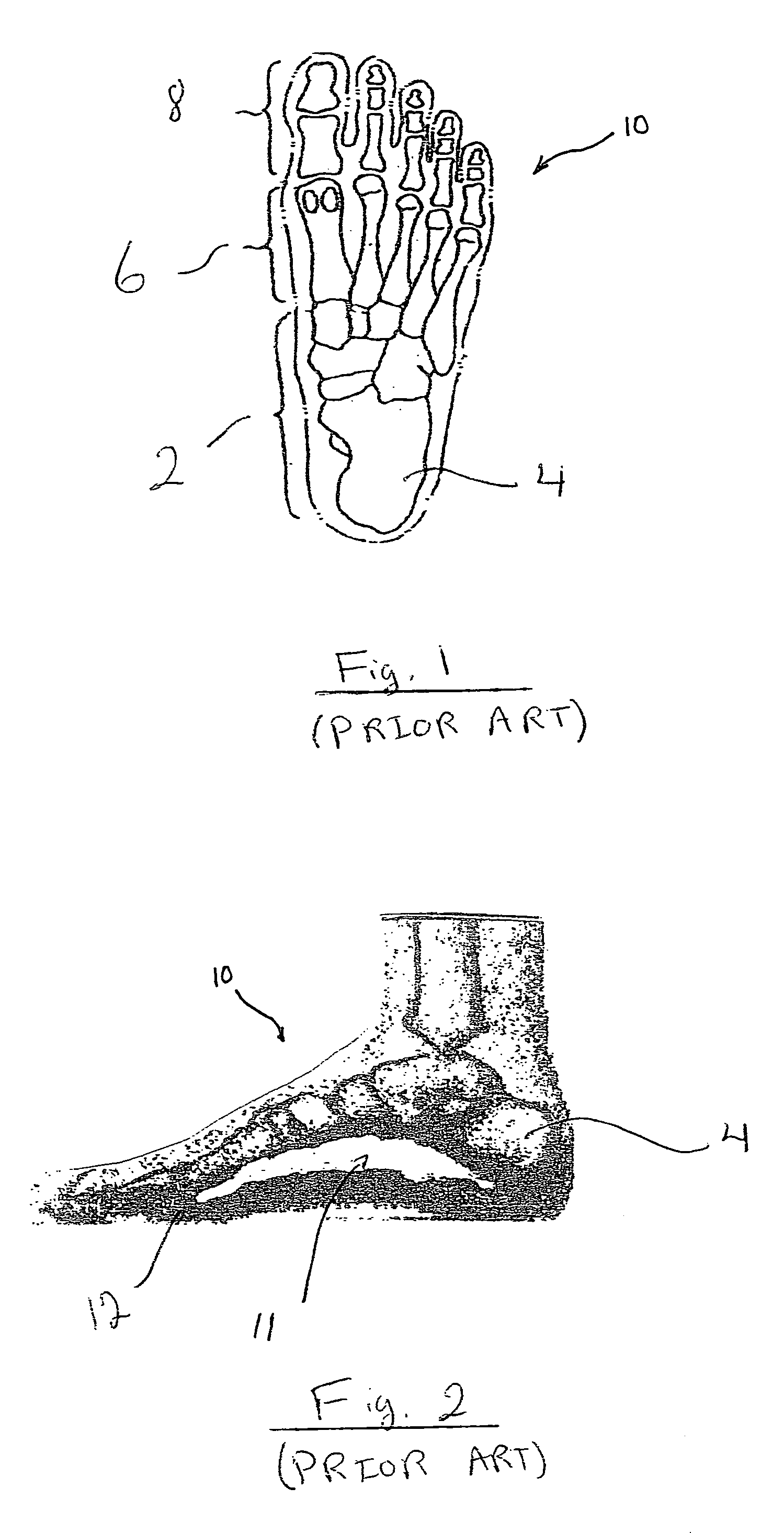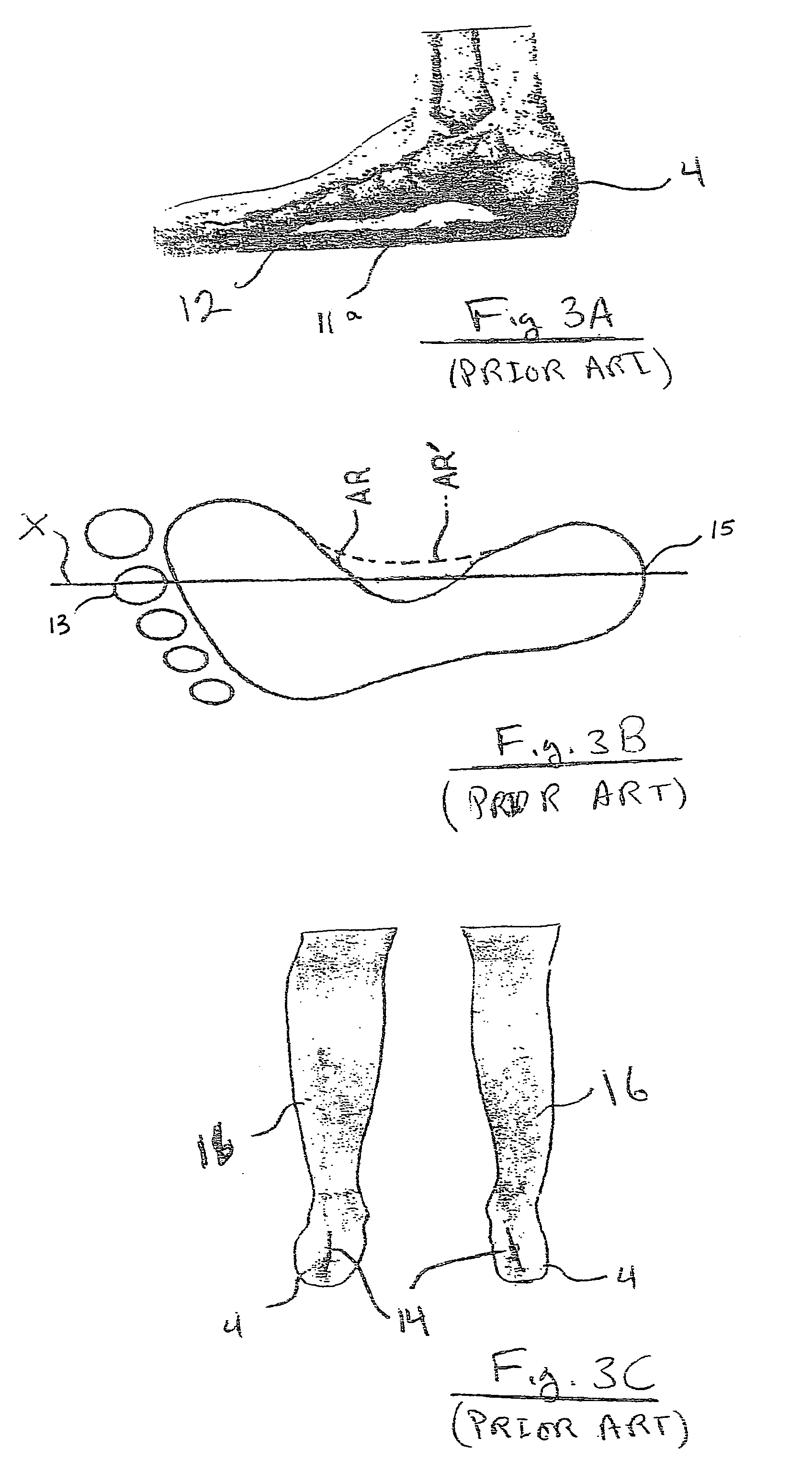Mass producible custom-made shoe inserts
a mass-produced, shoe insert technology, applied in the field of shoe inserts, can solve the problems of achilles tendon radiation, other foot problems, severe discomfort,
- Summary
- Abstract
- Description
- Claims
- Application Information
AI Technical Summary
Benefits of technology
Problems solved by technology
Method used
Image
Examples
Embodiment Construction
[0044]The present invention provides unique orthotics (mass producible, custom-made shoe inserts) to correct and eliminate pain associated with biomechanical inefficiencies of an abnormal foot. The invention disclosed herein as shown through its preferred embodiments, further bridges the gap between the over-the-counter “one size fits all” shoe insoles and the in-office doctor-casted insoles (orthotics). The preferred orthotics of the present invention correct rather than merely accommodate the abnormal feet alignment due to the low arch height of the feet. Among the main objectives of these orthotics are to preserve the perpendicular alignment of the heel to the ground, align the midfoot to the central forward-moving motion of the foot, and align the forefoot parallel to the ground surface.
[0045]FIGS. 4A and 4B illustrate a first preferred embodiment of the present invention. The hook or the high-heel dress shoe orthotic 20 illustrated in FIG. 4A is made with a hook-shaped heel por...
PUM
 Login to View More
Login to View More Abstract
Description
Claims
Application Information
 Login to View More
Login to View More - R&D
- Intellectual Property
- Life Sciences
- Materials
- Tech Scout
- Unparalleled Data Quality
- Higher Quality Content
- 60% Fewer Hallucinations
Browse by: Latest US Patents, China's latest patents, Technical Efficacy Thesaurus, Application Domain, Technology Topic, Popular Technical Reports.
© 2025 PatSnap. All rights reserved.Legal|Privacy policy|Modern Slavery Act Transparency Statement|Sitemap|About US| Contact US: help@patsnap.com



